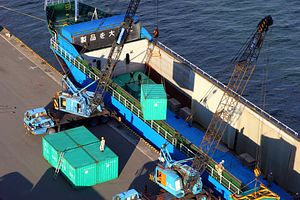Asia’s economic resilience is set for some more severe tests, including the threat of higher U.S. interest rates and another China shock. But according to the World Economic Forum (WEF), the region need not look too far afield in learning how to strengthen itself for future challenges.
In its “Global Competitiveness Report 2015-2016,” the WEF ranked Switzerland top for the seventh consecutive year, with its strong performance in all 12 assessed categories helping explain its resilience to the global financial crisis and subsequent shocks. However, Asia’s leaders retained their positions from last year, with Singapore ranked second, Japan sixth and Hong Kong seventh, while Taiwan dropped a place to 15th, New Zealand gained one spot to 16th and Malaysia advanced two places to 18th, while Australia improved a notch to 21st.
According to the Switzerland-based organization, Singapore beat everyone apart from its European rival for the fifth straight year, with the Southeast Asian city-state scoring highly for its efficiency, quality education, infrastructure and macroeconomic stability. However, a relatively low rate of workforce participation by its women, where it rated 75th, was marked as an area needing improvement.
Like Singapore, Japan was also urged to make its “womenomics” policies count to make better use of its female talent, where it ranked 83rd. The world’s third-biggest economy scored highly for its “excellent infrastructure, a healthy workforce and a strong ecosystem for innovation,” while its macroeconomic environment has improved due to the “return of moderate inflation,” a key goal of Abenomics.
Lower-ranked China (28th) could learn much from its special administrative region of Hong Kong, which placed seventh for the third consecutive year on the back of its strengths in finance, transport and trade. However, it was marked down on innovation where it ranked 27th, with business leaders citing the capacity to innovate as their “biggest concern.”
India was a standout performer, ending five years of decline to surge 16 places higher to 55th. In contrast, the region’s biggest economy, China failed to advance, demonstrating “the challenges it faces in transitioning its economy.”
South Korea was unchanged in 26th, while Southeast Asia’s major economies showed mixed results. While Vietnam advanced 12 places to 56th and the Philippines gained five ranks to 47th, Thailand slipped a place to 32nd and Indonesia dropped three to 37th. Myanmar was the region’s worst performer in 131st, with Pakistan ranked 126th and Bangladesh 107th.
The report ranked 140 countries based on 12 pillars comprising institutions, infrastructure, macroeconomic environment, health and primary education, higher education and training, goods market efficiency, labor market efficiency, financial market development, technological readiness, market size, business sophistication, and innovation.
According to WEF, the need for further structural reforms was shown by the “correlation between highly competitive countries and those that have either withstood the global economic crisis or made a swift recovery from it. The failure, particularly by emerging markets, to improve competitiveness since the recession suggests future shocks to the global economy could have deep and protracted consequences.”
The forum highlighted success stories such as Indian training company Infrastructure Leasing & Financial Services (IL&FS Skills), which aims to address a national skills gap by training young people from rural areas in 16 strategic sectors. Working under a public-private partnership model, the organization has already trained 100,000 students, with 85 percent successfully employed, WEF said.
Similarly, South Korea’s “Meister Schools” aim to alleviate an unbalanced labor market where reportedly 42 percent of Koreans are overqualified for their jobs, but 20 percent of smaller enterprises suffer from skills shortages, such as a lack of technical workers. The network aims to raise the status of technical jobs, giving students free tuition and referring them as young “meister,” the German term for master craftsman.
Commodity risks
While Asia’s resilience to financial shocks such as the 2008 global financial crisis may have been strengthened through closer trade relationships, the region faces a growing challenge from the effects of China’s slowdown, the widening interest rate differential with the United States and weak outlook for commodity prices.
According to the International Monetary Fund, recent declines in commodity prices could shave off one percentage point annually from the growth rate of commodity exporters such as Indonesia and Australia over 2015-17 compared with 2012-14, with the drag as high as 2.25 percentage points for energy exporters.
The Asian Development Bank (ADB) has also warned that softer growth prospects for China and India and a sluggish recovery in advanced economies will further slow growth in developing Asia. The ADB expects gross domestic product growth in the region of 5.8 percent this year and 6 percent in 2016, both down on its March projections of 6.3 percent for both years.
“The new normal of slow productivity growth poses a grave threat to the global economy and seriously impacts the world’s ability to tackle key challenges such as unemployment and income inequality. The best way to address this is for leaders to prioritize reform and investment in areas such as innovation and labour markets; this will free up entrepreneurial talent and allow human capital to flourish,” Columbia University economics professor Xavier Sala-i-Martin was quoted saying by the WEF.
Recession-proofing Asia in the “fourth industrial revolution” could prove far harder than the region’s previous gains from export-driven industrialization. Learning the lessons could be crucial if Asia is to move ahead in the global competitiveness race.

































